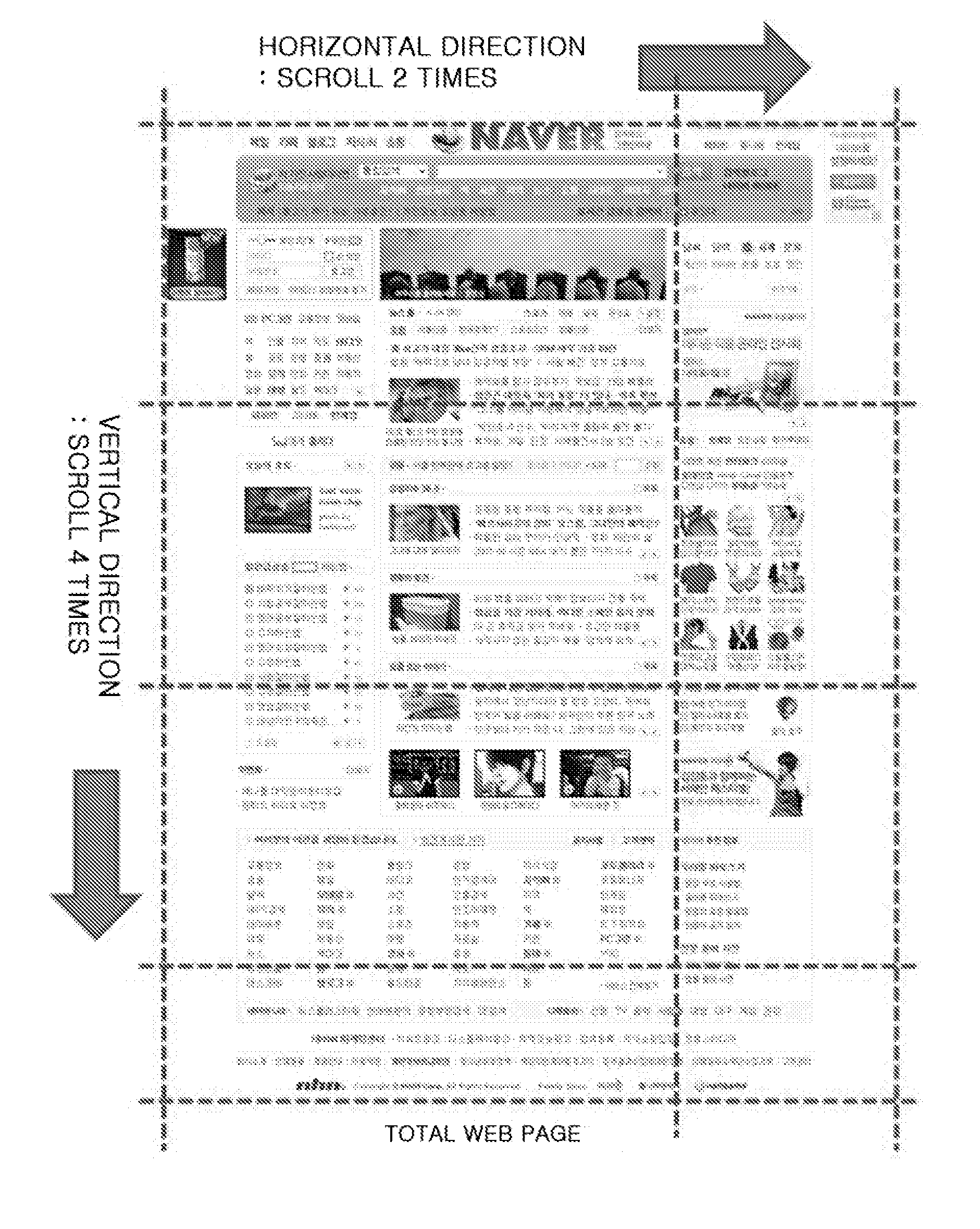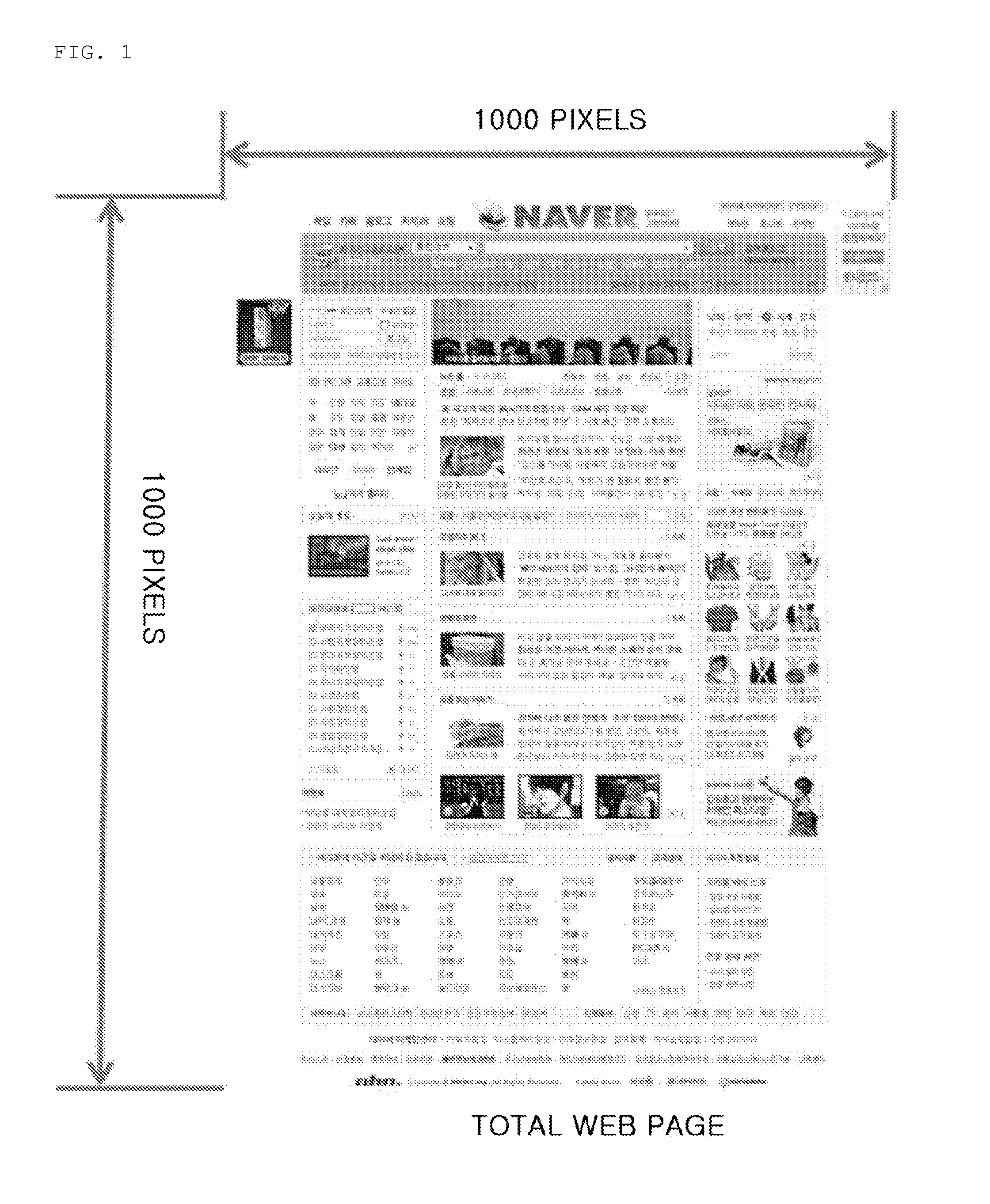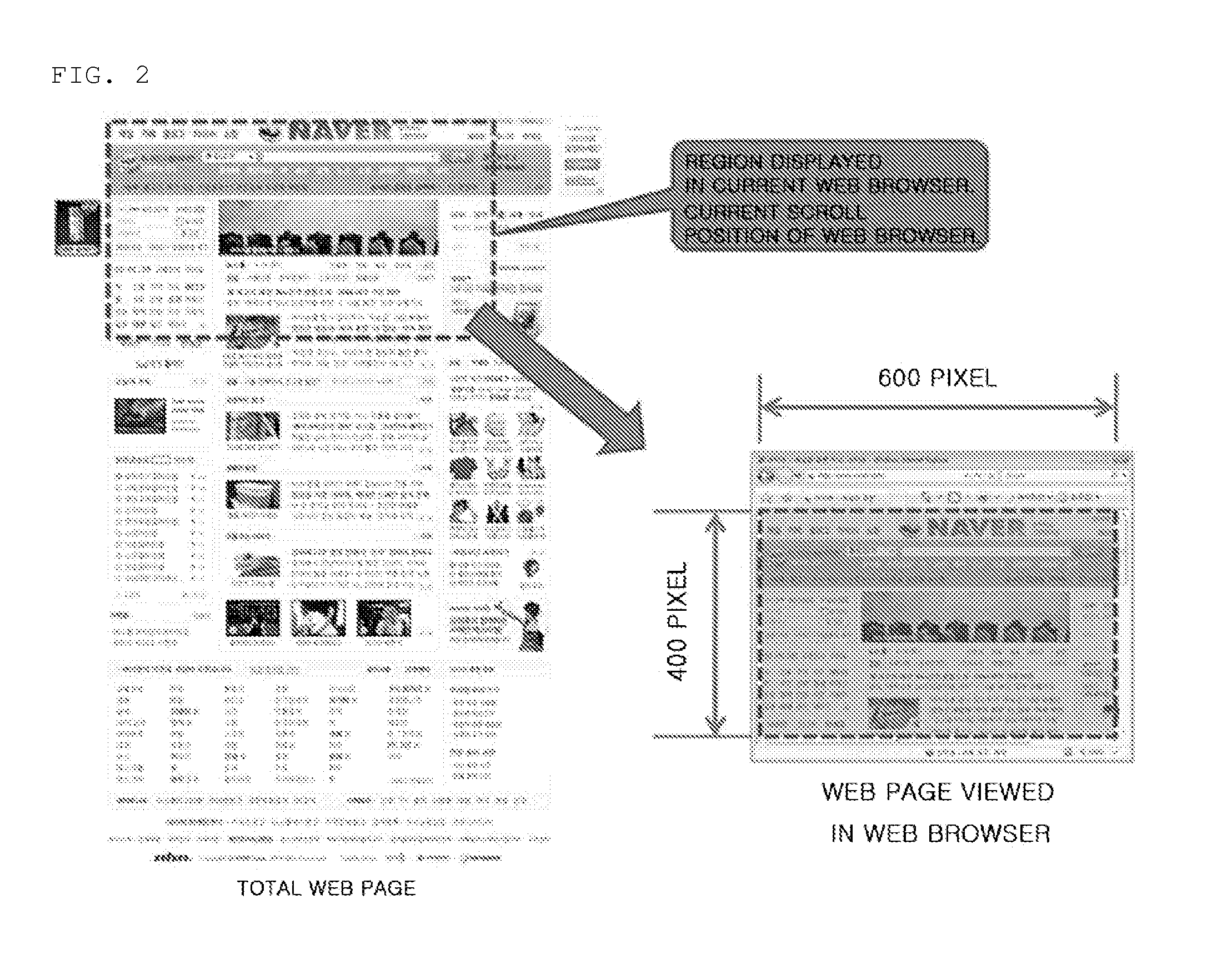Method for printing a captured screen of web pages
a web page and capture screen technology, applied in the field of web page capture screen printing, can solve the problems of abnormal printing of web pages, degrading the quality of printed materials, etc., and achieve the effect of improving printing quality, more graphic information, and not degrading the printing quality of web pages
- Summary
- Abstract
- Description
- Claims
- Application Information
AI Technical Summary
Benefits of technology
Problems solved by technology
Method used
Image
Examples
Embodiment Construction
ing a portion of the total region of the web page of FIG. 11;
[0034]FIG. 20 illustrates an embodiment of a process for dividing the web browser screen of each scroll position into metafile segments by using a web screen rendering interface of the web browser;
[0035]FIG. 21 illustrates an embodiment of a metafile corresponding to the captured screen of FIG. 12;
[0036]FIG. 22 illustrates an embodiment of a process for removing unnecessary graphic elements from the metafile of FIG. 21 to generate a secondary metafile including only pure web page contents;
[0037]FIG. 23 illustrates an embodiment of secondary metafiles corresponding to the captured screens of FIGS. 12 to 19; and
[0038]FIG. 24 illustrates an embodiment of a process for combining the secondary metafiles of FIG. 23 to generate one web page screen.
DETAILED DESCRIPTION OF THE INVENTION
[0039]Reference will now be made in detail to the preferred embodiments of the present invention, examples of which are illustrated in the accompany...
PUM
 Login to View More
Login to View More Abstract
Description
Claims
Application Information
 Login to View More
Login to View More - R&D
- Intellectual Property
- Life Sciences
- Materials
- Tech Scout
- Unparalleled Data Quality
- Higher Quality Content
- 60% Fewer Hallucinations
Browse by: Latest US Patents, China's latest patents, Technical Efficacy Thesaurus, Application Domain, Technology Topic, Popular Technical Reports.
© 2025 PatSnap. All rights reserved.Legal|Privacy policy|Modern Slavery Act Transparency Statement|Sitemap|About US| Contact US: help@patsnap.com



